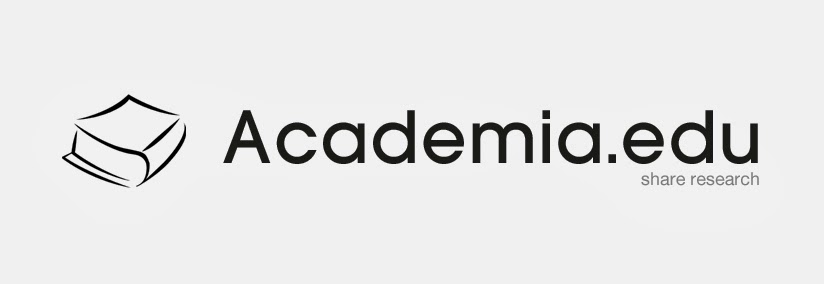Zakat dalam Model Ekonomi Makro (Solusi Ketimpangan dan Pertumbuhan Ekonomi)
Abstract
This study aims to explore and evaluate the effectiveness of zakat distribution as a mechanism for alleviating the poor. The approach used in this study is the study of literature or library research. The results of this study indicate that the effect of zakat distribution on efforts to reduce poverty is varied in each region. Even so, the distribution of zakat funds has a positive effect, but the influence of zakat is varied. There is even a small impact on increasing the income of the poor and economic growth. This is caused by different perspectives in various regions. Therefore, the management of zakat needs to be adjusted with the recipient's profile of zakat (mustahik). Within the national (macroeconomic) framework, zakat funds can be used to increase the purchasing power of the poor and economic growth, thereby narrowing the gap between rich and poor people. In general, muzaki and mustahik have the same view on the aspect of zakat, namely as an activity of worship.
Keywords
Full Text:
PDF (Bahasa Indonesia)References
Abdullah, N., Derus, A. M., & Al-Malkawi, H.-A. N. (2015). The effectiveness of zakat in alleviating poverty and inequalities a measurement using a newly developed technique. Humanomics, 31(3), 314–329. https://doi.org/10.1108/H-02-2014-0016
Afsar, R. (2010). Poverty, inequality and the challenges of pro-poor governance in Bangladesh. Journal of South Asian Development, 5(2), 187–219. https://doi.org/10.1177/097317411000500201
Ahmad, R. A. R., Othman, A. M. A., & Salleh, M. S. (2015). Assessing the Satisfaction Level of Zakat Recipients Towards Zakat Management. Procedia Economics and Finance, 31(15), 140–151. https://doi.org/10.1016/s2212-5671(15)01141-7
Alim, M. N. (2015). Utilization and Accounting of Zakat for Productive Purposes in Indonesia: A Review. Procedia - Social and Behavioral Sciences, 211(September), 232–236. https://doi.org/10.1016/j.sbspro.2015.11.028.
Al-Qur'an digital 2.1.2007. diunduh dari http:www.alquran-digital.com tanggal 02 Februari 2019.
Anis, F. M., & Kassim, S. H. (2016). Effectiveness of Zakat-Based Programs on Poverty Alleviation and Economic Empowerment of Poor Women: a Case Study of Bangladesh. Journal of Islamic Monetary Economics and Finance, 1(2), 229–258. https://doi.org/10.21098/jimf.v1i2.539
Athoillah, M. A. (2018). The Zakat Effect on Economic Growth, Unemployment, and Poverty in The Island of Java: Panel Data Analysis 2001-2012. Ekspansi, 10(2), 205–230.
Ayuniyyah, Q., Pramanik, A. H., Saad, N. M., & Ariffin, M. I. (2018). Zakat for Poverty Alleviation and Income Inequality Reduction. Journal of Islamic Monetary Economics and Finance, 4(1), 85–100. https://doi.org/10.21098/jimf.v4i1.767
Cohen, D., & Alleyne, G. A. O. (2002). Health, Economic Growth, and Poverty Reduction. In World Health Organization Geneva. https://doi.org/ISBN: 92 4 159009 2
Harahap, N. (2014). Penelitian Kepustakaan. Iqra, 08(01), 68–73.
Hayeeharasah, F., Sehvises, S., & Ropha, H. (2013). The Timeline of Zakah. Procedia - Social and Behavioral Sciences, 88, 2–7. https://doi.org/10.1016/j.sbspro.2013.08.474
Heryanto. (2016). Zakat : Harapan dan Realita (Study Kasus di Kota Samarinda). Jurnal DINAR Ekonomi Syariah, 1(1), 1–12.
Ismail, A. G., Hassan, M. E. M., Norazman, I., & Shahida, S. (2010). Proceedings of Seventh International Confrence The Tawhidi Epistimology: Zakat, and Waqf (A. G. Ismal, M. E. M. Hassan, N. Ismail, & S. Shahimi, eds.). https://doi.org/10.1109/INCOS.2010.100
Jochumzen, P. (2010). Essentials of Macroeconomics. In Peter Jochumzen & Ventus Publishing ApS. Retrieved from http://bookboon.com
Khasandy, E. A., & Badruddn, R. (2019). The Influence of Zakat on Economic Growth and Welfare Society in Indonesia. MPRA, 91574(19 January 2019), 65–79. https://doi.org/10.1227/01.NEU.0000349921.14519.2A
Khatibah. (2011). Penelitian Kepustakaan. Iqra’, 5(01), 36–39.
Mahfuzha, A., Rizki, C. Z., Sapha, D., Fitriyani, F., Jamal, A., & Weri, W. (2019). Is Zakat Important in Reducing Poverty? Atlantis Press., 292(Agc), 558–562. https://doi.org/10.2991/agc-18.2019.83
Mahyudin, A. B., & Abdullah, A. G. (2011). Towards Achieving the Quality of Life in the Management of Zakat Distribution to the Rightful Recipients (The Poor and Needy). International Journal of Business and Social Science, 2(4), 237–246. Retrieved from http://ijbssnet.com/journals/Vol._2_No._4;_March_2011/27.pdf
Nurjanah, F., Kusnendi, & Juliana. (2019). The Impact of Economic Growth and Distribution of Zakat Funds on Poverty (Survey in the Third District of West Java Province Period 2011-2016). KnE Social Sciences, 3(13), 55–70. https://doi.org/10.18502/kss.v3i13.4195
OpenStax. (2017). Introduction to Sociology (2e ed.). Houston, Texas: Rice University.
Oran, A. (2009). Zakat Funds and Wealth creation. Review of Islamic Economics, 13(1), 143–154.
Pidianti, P. (2014). Model Pengaruh Persepsi dan Motivasi Muzakki terhadap Keputusan Membayar Zakat Profesi (Studi Kasus: Karyawan PT PLN Region Jawa Barat). In SB-IPB. Retrieved from repository.sb.ipb.ac.id/1766/%0A%0A
Puskas Baznas. (2017). 2017 Indonesia Zakat Outlook. Center of Strategic Studies The National Board of Zakat, Republic of Indonesia, 85. Retrieved from https://www.puskasbaznas.com/images/outlook/Indonesia Zakat Outlook2017EN_PUSKASBAZNAS.pdf
Rahim, A. R. (2007). Islamic Microfinance: A Missing Component in Islamic Banking. Kyoto Bulletin of Islamic Area Studies, 1(2), 38–53. Retrieved from http://weekly.cnbnews.com/news/article.html?no=124000
Riwajanti, N. I. (2013). Islamic Microfinance: A Tool for Poverty Alleviation. Afro Eurasian Studie, 2(1), 254–271. https://doi.org/10.1177/1018529120130109
Romdhoni, A. H. (2018). Effect of productive zakat program on the improvement of welfare in Sragen regency. Jurnal Ekonomi & Keuangan Islam, 4(1), 41–50. https://doi.org/10.20885/jeki.vol4.iss1.art5
Rozzani, N., Rahman, R. A., Mohamed, I. S., & Yusuf, S. N. S. (2015). Development of Community Currency for Islamic Microfinance. Procedia Economics and Finance, 31(15), 803–812. https://doi.org/10.1016/s2212-5671(15)01170-3
Saad, R. A. J., Aziz, N. M. A., & Sawandi, N. (2014). Islamic Accountability Framework in the Zakat Funds Management. Procedia - Social and Behavioral Sciences, 164(August), 508–515. https://doi.org/10.1016/j.sbspro.2014.11.139
Shirazi, N. S. (2006). Providing for the resource shortfall for poverty elimination through the institution of. IIUM Journal of Economics and Management, 1(1), 1–27.
Suryabrata, S. (2011). Metodologi Penelitian. In Grafindo Persada. Jakarta: Grafindo Persada.
Taufiq, I. F., Kusnendi, K., & Nurasyiah, A. (2018). The Effect of Productive Zakat , Business Experience , and Mentoring on Farmers ’ Revenues ( Survey on Lumbung Desa Program by Sinergi Foundation in Cibaeud Village , Cigalontang District , Tasikmalaya Regency ). International Journal of Zakat, 3(3), 55–67.
Wahyuni, E. S. (2011). Lampiran POB MK Studi Pustaka Pedoman Teknik Penulisan Laporan Studi Pustaka. Fakultas Ekologi Manusia – IPB, (November), 1–57. Retrieved from http://skpm.ipb.ac.id/web/wp-content/uploads/2012/08/pedoman-menulis-laporan-studi-pustaka-111111.pdf
Yaacob, Y., & Azmi, I. A. G. (2012). Entrepreneur’s Social Responsibilities From Islamic Perspective: A Study of Muslim Entrepreneurs In Malaysia. Procedia - Social and Behavioral Sciences, 58(1999), 1131–1138. https://doi.org/10.1016/j.sbspro.2012.09.1094
Zain, M. M., Darus, F., & Ramli, A. (2015). Islamic Ethical Practices and the Marketplace: Evidence from Islamic Financial Institutions. Procedia Economics and Finance, 28(April), 266–273. https://doi.org/10.1016/s2212-5671(15)01110-7
DOI: https://doi.org/10.21107/mediatrend.v15i2.5999
Copyright (c) 2020 Media Trend


















